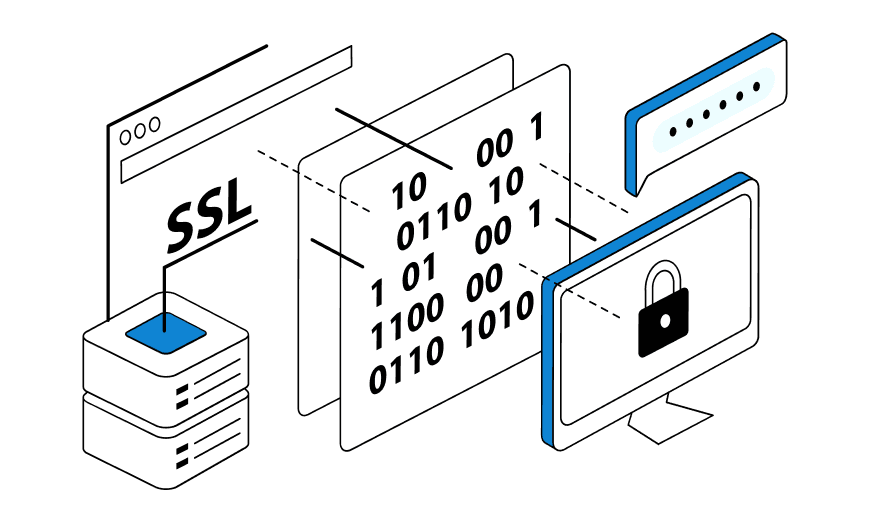
Decisions in e-commerce are made faster than on the stock exchange: prices are adjusted by algorithms, balances “melt” in real time, and competitors’ stocks start suddenly. In such conditions, only Ozon parsing – automatic collection of the site’s open data – gives the brand owner or analytical department a sustainable information advantage.
Introduction to parsing of marketplaces
Every marketplace is a dynamic showcase: HTML-page is formed on the fly, some data is loaded via AJAX, and protection against bots is constantly evolving.
Why collect data from Ozon?
Collecting and analyzing data from the Ozon marketplace is not just a technical task, but a strategic approach that allows businesses to respond quickly to changing market conditions. Regular monitoring of prices, assortment and competitors’ activity with the help of automated data collection helps companies to more accurately forecast demand, effectively manage inventory and increase profits. Why parse Ozon? This is how a business solves three tasks:
Pricing. Regular market slicing allows you to customize intelligent price lists and avoid getting caught up in price wars.
Assortment. Seeing which SKUs are “taking off” or “sagging” at other sellers, companies launch their own SKUs faster than the market average.
Competitors. Service metrics (rating, delivery times) help you gauge how serious each outlet near you is.
In short, Ozone parsing turns a stream of raw numbers into a “what to do right tomorrow” solution.
The legality and ethics of scraping
How legal is it to collect data automatically? Russian law does not prohibit the use of publicly available information, but courts are increasingly paying attention to the violation of the site’s user agreement and the creation of increased load.
To avoid being in the risk zone:
- provide for delays in the code when accessing the resource;
- avoid copying copyrighted media files;
- keep logs of requests for further audit.
Let’s consider further how to start parsing Ozone.
Setting up the environment and selecting tools
When developing a tool for parsing data from Ozon, one of the key issues is choosing a suitable library to automate the process. Two Python libraries are most often used: BeautifulSoup and Selenium.
Python scripts: BeautifulSoup vs. Selenium
While both are designed for web parsing, there are fundamental differences between them that affect the efficiency, speed and scalability of the solution.
BeautifulSoup features:
- Suitable for static pages.
- High speed HTML processing.
- Low resource consumption.
- No support for JavaScript content.
Selenium features:
- Full browser emulation.
- Support of dynamically loaded content.
- Ability to simulate user actions.
- High consumption of memory and CPU resources.
BeautifulSoup is a Python library created specifically for extracting data from HTML and XML documents. Its main advantage is high speed of work with already loaded HTML code and minimal requirements for computer resources. But for all its efficiency, BeautifulSoup cannot interact with web page elements, which are formed dynamically via JavaScript.
Using BeautifulSoup is justified if your task is to easily and quickly parse HTML code that you have already retrieved after querying with Python tools (e.g. using the requests library). This makes it a great solution for mass data extraction from pages with a simple structure.
An example scenario of using BeautifulSoup:
- Retrieving HTML via requests.
- Parsing a known page structure.
- Quickly extract information (price, title, product description).
import requests
from bs4 import BeautifulSoup
url = ‘https://www.ozon.ru/product/sample-product/’
headers = {‘User-Agent’: ‘Mozilla/5.0’}
response = requests.get(url, headers=headers)
soup = BeautifulSoup(response.text, ‘html.parser’)
product_title = soup.select_one(‘h1.product-name’).text.strip()
price = soup.select_one(‘span.price’).text.strip()
print(f’Name: {product_title}, Price: {price}’)
However, if the site uses AJAX or dynamic content loading, BeautifulSoup becomes powerless.
Selenium, on the contrary, becomes a complete solution that mimics the actions of a real user. It is capable of handling pages with JavaScript content, button clicks, form filling and interaction with any dynamic web page elements. Selenium uses a browser engine (such as ChromeDriver) that runs a real browser in the background.
Using Selenium is justified if:
- It is necessary to parse websites with JavaScript and AJAX.
- It is important to simulate user behavior, for example, logging into a personal account.
- The page is protected from automated scripts using captcha, and it is required to simulate real behavior to bypass restrictions.
An example of basic Selenium usage for Ozon:
from selenium import webdriver
from selenium.webdriver.common.by import By
from selenium.webdriver.chrome.options import Options
import time
chrome_options = Options()
chrome_options.add_argument(‘–headless’) # Running without GUI
driver = webdriver.Chrome(options=chrome_options)
driver.get(‘https://www.ozon.ru/product/sample-product/’)
time.sleep(5) # Wait for the page to fully load
product_title = driver.find_element(By.CSS_SELECTOR, ‘h1.product-name’).text
price = driver.find_element(By.CSS_SELECTOR, ‘span.price’).text
print(fName: {product_title}, Price: {price}’)
driver.quit()
The price of convenience and full functionality of Selenium is significant consumption of computer resources. When launching a large number of browsers at the same time, RAM and CPU limitations may occur.
Often developers use both libraries in one task. Selenium is used only at the stage of getting a full page with JavaScript execution, after which HTML code is passed to BeautifulSoup for fast parsing. This is the optimal solution in terms of speed and resource consumption for large-scale parsing of the Ozon marketplace.
The choice of tools depends on the goals, peculiarities of the site structure and the scale of the project. A competent combination of BeautifulSoup and Selenium will create an effective and stable tool that will consistently provide you with fresh and accurate data from the Ozon platform. By combining them, you get flexibility. Importantly, Ozon Python parsing often starts in Selenium and ends with light HTML parsing in BeautifulSoup.
Using mobile proxies to bypass blocking
Ozon limits the frequency of requests by IP. Mobile addresses of operators look natural to antibot filters, so the demand for mobile proxies from LTESOCKS is growing. You get a pool of dynamic IPs and reduce the chance of bans without complex rotation.
Anti-detect browser for mass requests
Blocking by browser biometrics (Canvas, WebGL, fonts) is more common than reCAPTCHA. Anti-defect platforms allow you to create unique “digital personas” for each stream. If you’ve written an Ozone parser and need hundreds of parallel sessions, this is a must have.

Implementation of Ozon parsing
There are three tasks lurking in the technical core of the project.
Getting HTML and pulling out product fields
Wait for Selenium networkidle to finish. Extract title, price, SKU, link, rating with CSS selector with a backup regular in case of class change.
Handling pagination and AJAX requests
Most categories form URLs of the form `?page=2`. But part of the Stock Feed is loaded with background XHR-json. Capturing them in DevTools will bypass the UI and speed up the Ozon parser several times.
Saving data to CSV or database
The choice of format for storing data depends on the analysis goals and the amount of information. If you need quick and simple analytics with small volumes, CSV files will be optimal. They can be easily opened in popular spreadsheet editors such as Excel or Google Sheets for quick analysis and visualization.
When implementing larger and longer-term projects, it is more convenient to store data in a full-fledged database, such as PostgreSQL. This approach provides the ability to execute complex SQL queries, automatically update data and store it in a structured form. Using the jsonb data format in PostgreSQL allows you to store information with a variable structure, which greatly simplifies schema management and eliminates the need for constant database migrations when changing the structure of the site or parser.
Analyzing collected data
After the completion of the technical stage of parsing comes no less important stage – analyzing the collected information. It is competent analytics that allows turning large volumes of raw data from the Ozon platform into useful business conclusions and specific strategic decisions. Data obtained through automated parsing can be used to track price dynamics, identify popular products and monitor competitors’ activity.
Compare prices and find discounts
Ozone’s price parser creates a “minimum/average/maximum price” table by product ID. By monitoring the daily delta, you can catch non-obvious promotional campaigns before they hit the loyalty feeds.
Identifying the most popular products
Review frequency correlates with sales. It’s not uncommon for a spike in reviews to precede a price increase when retailers see the excitement. By sorting positions by the number of new comments, the analyst will identify future best sellers the week before the peak.
Monitoring competitor activity
Regular monitoring of competitor activity means tracking how often prices change, how quickly new product items (SKUs) appear, and how regularly product images and descriptions are updated. Monitoring these parameters allows the commercial department to respond quickly to marketing campaigns of other sellers. In addition, brand managers are able to identify the reasons for the decrease in demand for specific items and adjust the promotion strategy in a timely manner.
Best practices and tips
Let’s consider how to optimize an already written and working parser.
Proxy rotation and speed limits
We recommend the algorithm of 10 queries – change IP + random delay of 4-7 s. You can buy a proxy for Google search to find market-wide data. It is recommended to keep a blacklist table of banned IPs and update the pool automatically.
Bypassing captchas and API restrictions
The effectiveness of automated data collection from Ozon directly depends on the ability to bypass the platform’s defense mechanisms, such as captchas and various API restrictions. One of the common ways to fight captcha is to use third-party services that offer automatic solutions to image recognition tasks via API. Such services allow you to significantly save time and automate the process of bypassing the protection, but their use increases the cost of each request, which can be unprofitable for large volumes of parsing.
Another approach is to use the official Seller API provided by Ozon. This in some cases turns out to be faster and more stable than the standard web interface. Seller API allows you to upload data on a large number of SKUs at once (up to 100 in one request). Although this approach is limited by certain quotas, it helps to avoid blocking associated with the intensity of requests through the regular website interface.
Additionally, VPN tunnels can be used to address regional or CDN access restrictions. Tools such as Open VPN for PC help to create stable secure connections, providing access to Ozon even when the platform is blocked for a particular region.
Scaling and automation plans
When implementing Ozon parsing, it is necessary to implement tools to manage a large volume of tasks and data. Using task queues such as RabbitMQ and containerization with Docker allow for easy infrastructure scaling and fault tolerance. Implementing monitoring and alerting systems, such as the Prometheus and Grafana bundle, makes it possible to quickly respond to problems and automatically restart processes in case of failures, guaranteeing the continuity of the parser’s work even in case of sudden changes on the site.
Automated data collection means competent management of margins, stock and brand presence. If Ozon changed its DOM structure tomorrow, the sustainable payplane would rebuild in hours. If competitors overestimate the lineup, the analytics dashboard will send an alert to Slack.
Once you have mastered the above techniques, you will work closely with Ozon, parsing of which will become a routine task, and each upload will turn into concrete actions: a new discount, a more accurate purchase or the launch of a test-batch product.









